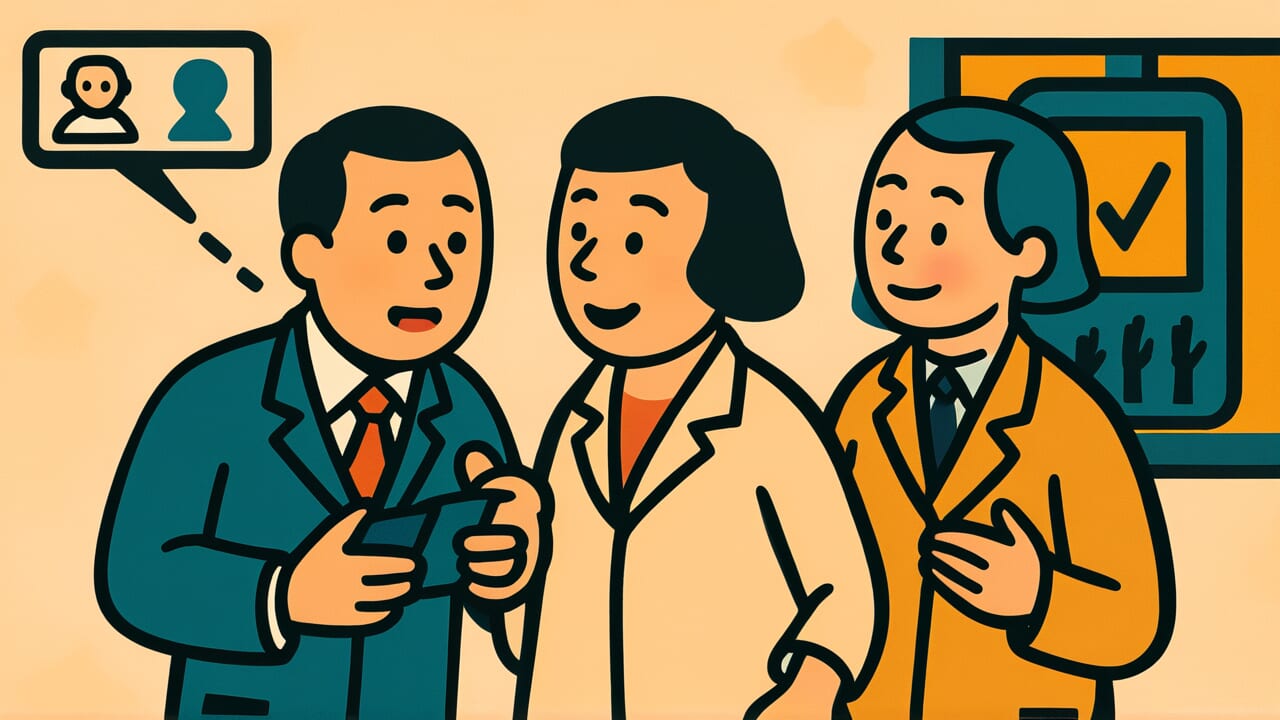How to Read “To know good and evil, look at one’s friends”
Zen’aku wa tomo wo miyo
Meaning of “To know good and evil, look at one’s friends”
“To know good and evil, look at one’s friends” means you can judge a person’s character by observing their friendships.
If you watch what kind of friends someone has, you can see that person’s true nature and personality.
This proverb is based on human nature. People naturally become close to others who share similar qualities and values.
Honest and sincere people tend to have equally sincere friends. Dishonest people tend to associate with others of similar character.
This saying is used when you want to understand someone you just met or don’t know well yet.
Surface behavior and words don’t always reveal someone’s true character. But looking at their friends gives you a more accurate picture.
Even today, in business and personal relationships, observing someone’s friendships is recognized as an effective way to evaluate their character.
Origin and Etymology
The exact origin of this proverb is unclear. However, it has been passed down through generations as traditional Japanese wisdom about judging character.
The background likely includes influence from ancient Chinese philosophy.
The Analects of Confucius contains the teaching “益者三友、損者三友” (three beneficial friends, three harmful friends). This emphasizes the importance of distinguishing between good and bad friends.
There’s also the saying “近朱者赤、近墨者黒” (near vermilion you become red, near ink you become black). This shows how friendships influence us.
Japan has long known the proverb “朱に交われば赤くなる” (if you mix with vermilion, you become red). “To know good and evil, look at one’s friends” likely emerged from this same philosophical tradition.
However, this proverb takes a different perspective. It’s not just about being influenced by friends.
Instead, it offers the insight that you can understand someone’s true nature by seeing what kind of friends they choose.
People are naturally drawn to others who share similar values and qualities. Our ancestors recognized this human nature.
They left us this proverb as practical wisdom for evaluating character.
Usage Examples
- If you’re curious about his character, remember “to know good and evil, look at one’s friends” and try meeting his friends first
- Since “to know good and evil, look at one’s friends,” let’s observe who that person spends time with
Universal Wisdom
The universal truth in “To know good and evil, look at one’s friends” is that our choices mirror who we are.
Whether consciously or unconsciously, we choose as friends people who resonate with us. This choice itself speaks volumes about our inner selves.
Why has this proverb been passed down through the ages? Because humanity has always felt both the difficulty and importance of understanding others.
People can say anything with words. They can speak nobly and pretend to be good.
But the friends they choose to spend time with daily cannot be faked so easily.
What’s interesting is that this proverb doesn’t say “friends change you.” Instead, it says “friends reveal you.”
Of course, friends do influence us. But before that, the proverb focuses on why we chose those friends in the first place.
People fear loneliness, yet they cannot befriend just anyone. We naturally choose people who make us comfortable, people whose values match ours.
These selection criteria reveal our true nature. If we love goodness, we choose good friends. If we seek profit, we choose friends who share that pursuit.
This law of human psychology remains constant no matter how times change.
When AI Hears This
When you observe friendships, two forces work simultaneously. One is the attraction where “similar people become friends.”
The other is the transformation where “friends become similar to each other.” When these two forces intertwine, something interesting happens.
Consider someone engaging in bad behavior. Did that person originally have bad qualities and befriend similar people?
Or did they become bad through the influence of friends they happened to meet? Answering this question is surprisingly difficult.
Both processes happen simultaneously.
Network science research shows numerically that behaviors like obesity and smoking spread among friends. One study reports that if a friend becomes obese, your chance of becoming obese increases by about 57 percent.
In other words, friends are both mirror and dye. Current friendships reflect your past self, but they also color your future self.
The essence of this proverb lies in this duality. Looking at friends reveals not only current good and evil.
As long as you stay with those friends, your future good and evil are also being determined. The cause-and-effect relationship isn’t one-directional.
It loops and continuously reinforces itself. That’s why choosing friends isn’t just about compatibility. It’s an act of choosing your future.
Lessons for Today
This proverb teaches modern people the importance of examining their friendships. The people you spend time with daily are mirrors reflecting yourself.
If you want to change or grow, first look at who surrounds you.
This isn’t a cold teaching telling you to cut off friends. Rather, it’s a positive message.
Think about what kind of person you want to be. Then consciously build relationships that match that vision.
Cherish encounters with people you respect, people who stimulate you, people who help you grow.
At the same time, this proverb is a tool for self-awareness. Think about the friends around you now.
What do they have in common? That commonality also reflects who you are.
This realization might sometimes be harsh. But it offers a valuable opportunity to see yourself objectively.
Life is a series of choices. The choice of who you spend time with is a crucial factor determining what kind of life you’ll lead.



Comments